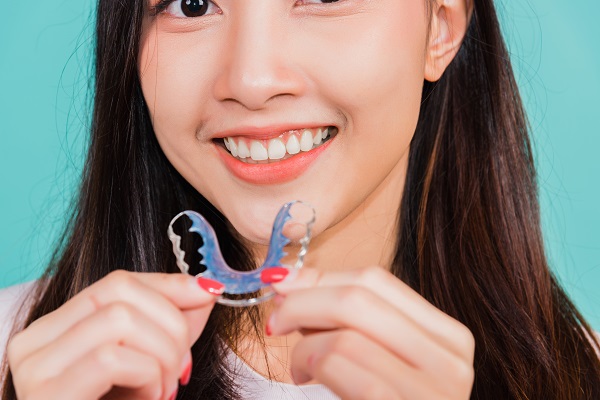



Generally, a retainer is the last vital stage of orthodontic treatment. The appliance, made from metal and plastic, is personalized for each patient to fit perfectly into the wearer’s mouth. After braces or other orthodontic devices have corrected the alignment of the teeth, the retainer functions to stop them from shifting back to their previous positions. If you are due to have your braces removed, it would be helpful to learn about this device, especially the important role it serves in orthodontic treatment.
What to know about retainers
Types of retainers
Retainers can be permanent or removable. Removable retainers can be taken out when eating and have to be worn for at least a year after the braces are taken off. The permanent or fixed retainers are bonded almost permanently to the teeth and can only be taken off by an orthodontist. This type usually has to be worn for several years.
The importance of retainers
Retainers serve the role of aligning the gum and bone tissues with the corrected dentition achieved with braces. This process can take much longer to finish than the process of aligning the bite itself. In some cases, it could take several months or years for the gum and bone tissues to fully stabilize in their current position.
With a corrected bite, your teeth can shift gradually every day. Although the teeth’s ability to move is the reason orthodontic treatment works, it can also reverse the corrections made by the orthodontic appliance. The orthodontist will determine precisely when and how long you would need retainers, but in most situations, you would need to wear them constantly between meals and while sleeping for a minimum of one month after teeth alignment is complete. The only way to ensure your smile stays aligned and stable is by faithfully wearing retainers.
That is not all…
Aside from keeping the teeth straight, wearing a retainer has other unique benefits. An aligned bite makes your teeth fully functional for speech and eating. Also, diabetic patients can prevent oral issues by wearing a retainer to keep their teeth straight. Crooked or misaligned teeth tend to develop cavities and decay.
For most parents, the hardest part of orthodontic treatment is making sure that their child uses the retainers correctly and does not lose them in school or while playing. You can help them remember the appliance by storing it in a bright case when they are leaving for school. Also, storing the case in the same place can help make it a routine.
Final note
Your oral hygiene regimen must include maintaining retainers. When you are not wearing removable retainers, ensure you store them in a vinegar and water solution or denture cleaner. The retainers must be stored in liquid because the plastic can crack if it becomes dry. If you have a removable device, you need to keep up with your routine dental appointments to prevent plaque or decay from building around the retainer.
If you have braces or require orthodontic treatment, contact a dentist for a consultation. Remember, retainers are the only way to keep your teeth aligned, which means they are necessary after orthodontic correction.
Request an appointment here: https://www.brooksideorthodontics.com or call Brookside Orthodontics at (209) 732-1124 for an appointment in our Stockton office.
Check out what others are saying about our services on Yelp: Read our Yelp reviews.
Recent Posts
Night guards are dental appliances designed to protect teeth from grinding or clenching during sleep, a condition known as bruxism. While over-the-counter options are widely available, custom night guards prescribed by a dental professional offer greater comfort, durability, and effectiveness. For many patients, investing in a custom night guard provides long-term benefits for both oral…
Many of us have likely had or know someone who has had corrective braces for crooked or misaligned teeth. However, there are many more types of teeth-related issues that braces may treat.Let’s examine how braces can be used to correct an alignment issue known as an overjet, including what exactly an overjet is, how it…
An orthodontist has various treatments to help patients achieve a straighter smile. While it is possible to get orthodontic treatment from other dental providers or even online, choosing a specialist like an orthodontist to guide your treatment can be the safest, quickest, and most comfortable route. Understanding why orthodontist-led treatments are the preferred choice for…
You may have seen someone wearing ceramic braces without even knowing it. These are most well-known for their discreet appearance and are ideal alternatives for patients who are concerned about how noticeable their braces would look. Read on to learn more about why ceramic braces are trusted among orthodontic professionals.Ceramic braces are among the most…


